- Author: Christine Casey
We know it's fall at the Honey Bee Haven is when our asters come into their full glory. This large (more than 600 species) group of plants even has its own book. Asters recently underwent a taxonomic revision that split the genus Aster into five genera. The commonly-available species either remained in Aster (Old World species) or were moved to Symphyotrichum (New World species).But the common name aster still applies to all. True plant nerds will want to read this detailed summary of the cultivated species. Blooming into November, asters are a valuable late-season source of pollen for bees and nectar for bees and butterflies.
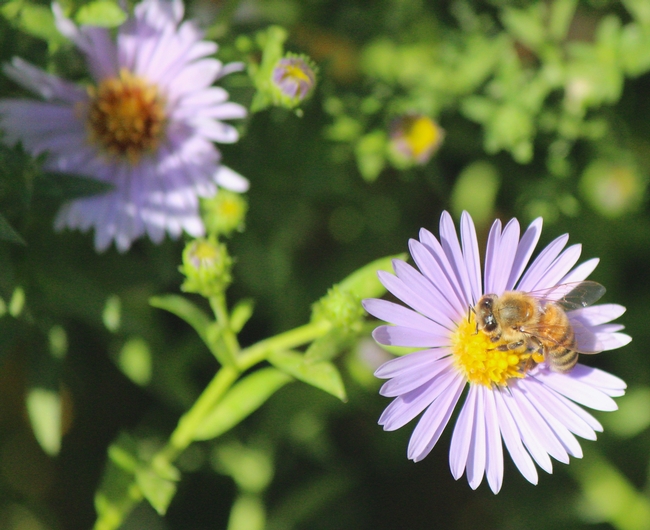
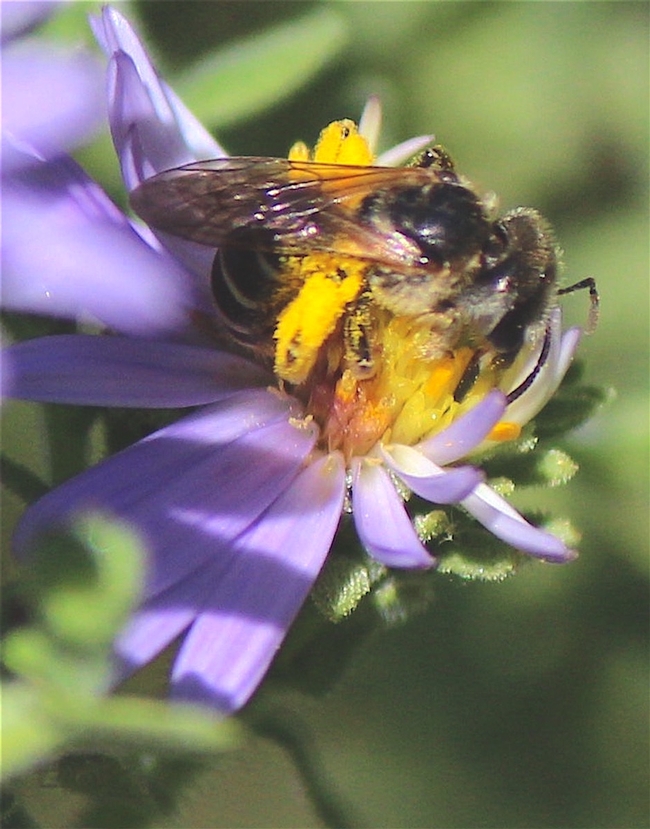
These are the species we have at the Haven, listed in order of bloom:
Aster 'Purple Dome': Symphyotrichum novae-angliae 'Purple Dome'. The species is native to the US east of the Rocky Mountains. This cultivar, which is a UC Davis Arboretum All-Star, is the first aster to bloom at the Haven. It typically starts flowering in late June; deadheading results in several more flushes of bloom until frost. It produces deep purple flowers and stays under 18 inches tall. It will spread and we divide ours every other year.
California aster: Symphyotrichum chilense. This one is about 24 to 30 inches tall; the amount of spread depends on how frequently it is watered. Ours receive a deep soaking about every three weeks and so far we've not seen any invasive tendencies.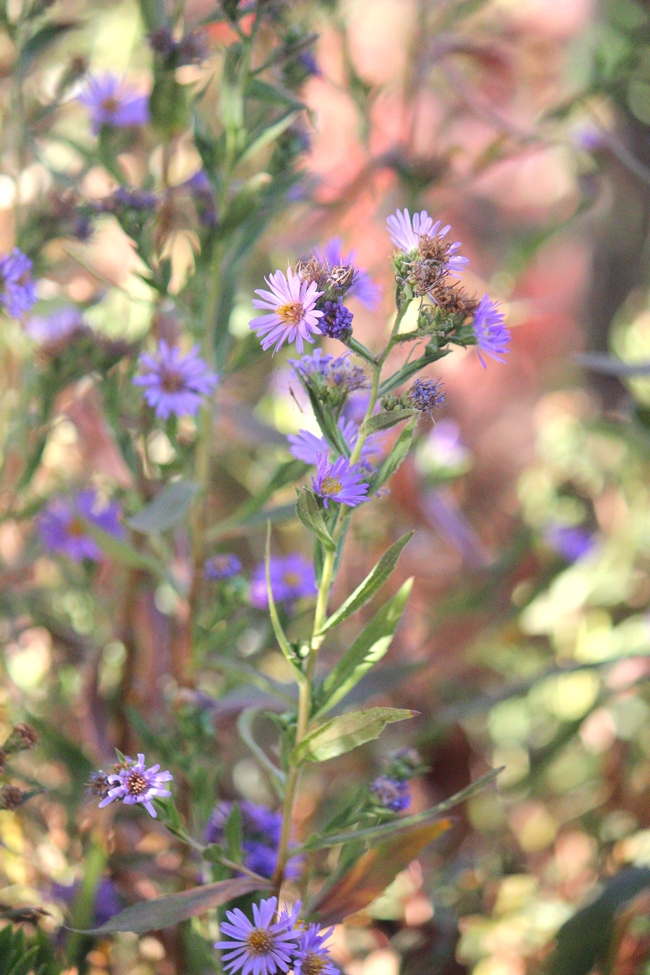
Aster 'Wood's Pink':Symphyotrichum dumosum 'Wood's Pink'. This aster has bright pink flowers and is native to the northeastern US. Ours is watered daily. It grows 12-16" tall, making it a nice addition to the front of a border. The species was used as a parent for developing smaller cultivars by Victor Vokes of the UK War Graves Commission, who needed low-growing, late fall color for WWI cemeteries.
Aster 'Fanny's': Symphyotrichum oblongifolium 'Fanny's'. The story of this cultivar of a southeastern US species is that Ruth Knopf of South Carolina acquired the aster from her maid, Fanny, who in turn received it from her grandmother. Fanny is 3 to 4 feet tall and wide.
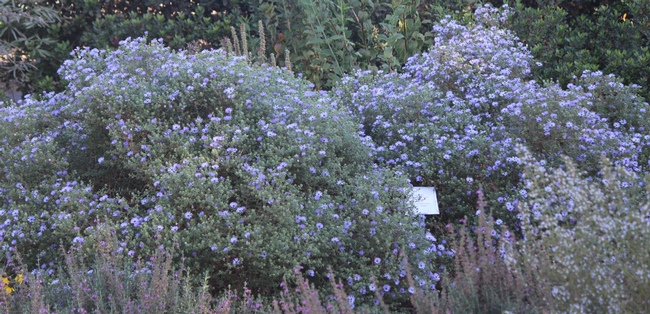
Aster 'Bill's Big Blue': Symphyotrichum 'Bill's Big Blue'. Give Bill some room! This selection can reach 5 to 6 feet in height and width. It will bloom through November. We divide Bill yearly. 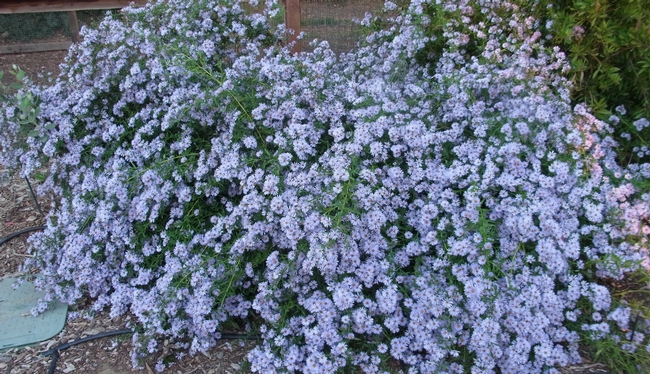


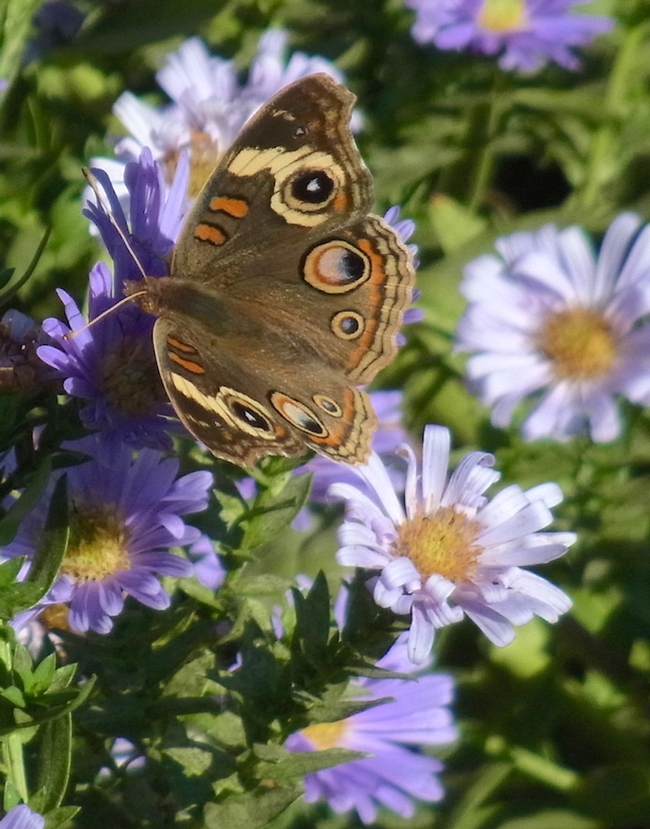


Glad you found this helpful.
The seeds so am letting some big stems go to seed, dead heading others . Converting garden to mostly CA natives- giant
Buckwheat is like a flying village hub.
* Also wondering if flowering plants for bees, beneficial insects or seeds for birds are more important as we near Fall- or perhaps equal ?
Good observation! Yes, once the center is no longer yellow pollen is not being produced. In planning a bee garden, it's important to consider overlapping bloom. For many plants, flowers will remain at the end of the bloom cycle but pollen and nectar are no longer being produced.
California buckwheat is a great plant to attract a diversity of beneficial insects. We find this consistently at the Haven in our studies of bee utilization of landscape plants.
Both are important, but I would guess that flowering plants for bees are more important than plants that provide seed for birds given that many people have bird feeders in their gardens.